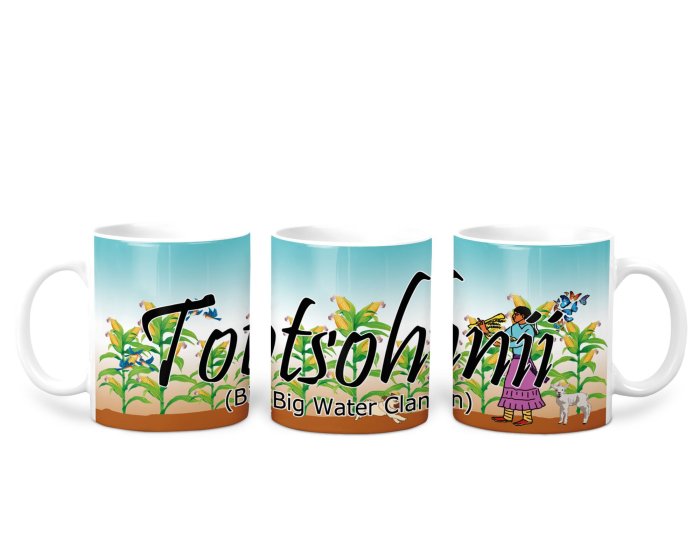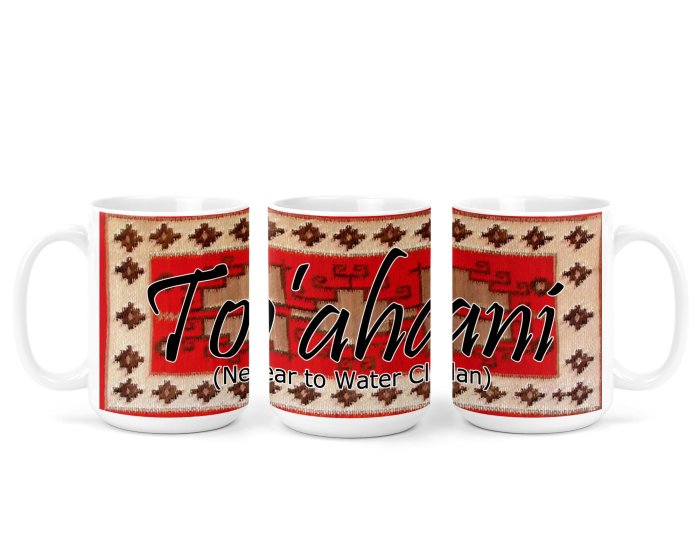Unveiling the Red Running into Water Clan, a rich tapestry of history, culture, and challenges unfolds before our eyes. This clan, steeped in tradition and resilience, has navigated the currents of time, leaving an indelible mark on its people and the broader community.
From its origins to its contemporary struggles, we delve into the heart of this remarkable clan, exploring its customs, governance, economic practices, and artistic expressions.
Red Running into Water Clan History
![]()
The Red Running into Water Clan is a Native American tribe that originated in the Great Plains region of North America. Their name comes from the Lakota phrase “Oglala Lakota,” which means “scattered or wandering people.” The clan has a rich and storied history, dating back to the 17th century.
The Red Running into Water Clan is known for its strong warrior tradition. In the 18th and 19th centuries, the clan played a significant role in the Indian Wars, fighting against the United States government. The clan also participated in the Battle of the Little Bighorn in 1876, where they helped to defeat General George Custer and the 7th Cavalry.
Leaders and Contributions, Red running into water clan
The Red Running into Water Clan has been led by many notable chiefs over the years. One of the most famous chiefs was Red Cloud, who led the clan during the Indian Wars. Red Cloud was a skilled warrior and diplomat, and he helped to negotiate the Treaty of Fort Laramie in 1868, which established the Great Sioux Reservation.
Another notable chief was Crazy Horse, who led the clan during the Battle of the Little Bighorn. Crazy Horse was a fearless warrior, and he is considered one of the greatest Native American leaders of all time.
The Red Running into Water Clan has made many contributions to American history and culture. The clan has played a significant role in the Indian Wars, and its members have served in the United States military with distinction. The clan is also known for its rich cultural traditions, including its music, dance, and art.
Customs, Traditions, and Ceremonies
The Red Running into Water Clan has a number of unique customs, traditions, and ceremonies. One of the most important ceremonies is the Sun Dance, which is held annually to honor the sun and to pray for good fortune. The Sun Dance is a four-day ceremony that involves dancing, singing, and praying.
It is a sacred ceremony that is only open to members of the clan.
Another important ceremony is the Ghost Dance, which was popular in the late 19th century. The Ghost Dance was a religious movement that promised to bring about the return of the buffalo and the restoration of the old way of life.
The Ghost Dance was banned by the United States government, but it continues to be practiced by some Native American tribes today.
Clan Structure and Governance

The Red Running into Water Clan, like many other Indigenous communities, operates with a distinct organizational structure and governance system that reflects their cultural values and traditions.
The clan’s organizational structure revolves around the concept of kinship and familial bonds. The clan is divided into several matrilineal lineages, each tracing its ancestry back to a common female ancestor. These lineages form the foundation of the clan’s social and political organization.
Roles and Responsibilities
- Clan Chief:The clan chief, typically the eldest male member of the senior lineage, serves as the clan’s primary leader and spokesperson. They are responsible for representing the clan in external affairs, making decisions on behalf of the clan, and ensuring the well-being of its members.
- Clan Council:The clan council consists of senior members from each lineage and acts as an advisory body to the chief. The council provides guidance on important decisions, discusses clan affairs, and resolves disputes.
- Lineage Heads:Each lineage has a designated head who represents their lineage on the clan council and oversees the affairs of their extended family.
- Clan Members:All members of the clan have a role to play in its governance and well-being. They participate in decision-making through clan meetings and contribute to the clan’s activities and responsibilities.
Decision-Making Processes
Decisions within the Red Running into Water Clan are made through a consensus-based process that involves consultation and discussion among clan members. Important decisions, such as those affecting the clan’s land, resources, or membership, are brought before the clan council for deliberation.
The council seeks to reach a consensus that respects the views and interests of all lineages and clan members.
Leadership Selection
The clan chief is typically chosen based on their age, wisdom, and experience within the clan. The position is often hereditary, with the chief’s eldest son or brother succeeding them. However, the clan council may also consider other factors, such as an individual’s leadership abilities and their commitment to the clan’s well-being.
Dispute Resolution Mechanisms
Disputes within the Red Running into Water Clan are typically resolved through mediation and negotiation. The clan council plays a central role in facilitating dialogue and finding mutually acceptable solutions. The clan’s emphasis on consensus-building and respect for all members helps to foster a harmonious and cooperative environment.
Relationship with Other Clans and the Broader Community
The Red Running into Water Clan maintains strong relationships with other clans and Indigenous communities in the region. They participate in inter-clan gatherings, ceremonies, and cultural exchanges. The clan also interacts with non-Indigenous organizations and institutions, working to protect their rights, preserve their culture, and promote their well-being.
Economic Activities and Land Use

The Red Running into Water Clan engaged in various economic activities that sustained their community. These included hunting, fishing, farming, and trade.
Hunting was a primary source of sustenance for the clan, with members skillfully pursuing deer, elk, and other game in the surrounding forests. Fishing was also vital, as the clan utilized the abundant waterways to catch salmon, trout, and other aquatic resources.
Farming
The clan practiced agriculture, cultivating crops such as corn, beans, and squash. These crops provided a reliable food source and played a significant role in the clan’s economic stability.
Land Use Practices
The clan had a deep understanding of their environment and implemented sustainable land use practices. Land ownership was communal, with the clan collectively managing and utilizing the resources within their territory.
Resource management was a priority, with the clan implementing measures to prevent overexploitation and preserve the natural environment. Conservation efforts included rotating hunting grounds, implementing fishing quotas, and protecting sacred sites.
Relationship with the Environment
The Red Running into Water Clan held a deep reverence for the natural world and viewed themselves as stewards of the environment. They believed that their well-being was intricately connected to the health of their surroundings.
As a result, they actively engaged in conservation practices, ensuring the long-term sustainability of their natural resources and the preservation of the delicate balance within their ecosystem.
Cultural Expressions and Arts: Red Running Into Water Clan

The Red Running into Water Clan has a rich and vibrant cultural heritage that encompasses a diverse range of artistic expressions, including language, music, dance, and storytelling. These cultural practices play a vital role in preserving the clan’s identity, traditions, and connection to their ancestral lands.
Language
The clan’s native language is an important part of their cultural identity. It is a complex and expressive language that has been passed down through generations. The language contains many words and phrases that describe the clan’s unique relationship with the natural world and their spiritual beliefs.
Music
Music is an integral part of Red Running into Water Clan culture. The clan has a rich tradition of singing, drumming, and playing various musical instruments. Music is often used for ceremonial purposes, such as healing rituals and storytelling. The clan’s music is often characterized by its haunting melodies and complex rhythms.
Dance
Dance is another important form of cultural expression for the Red Running into Water Clan. The clan has a variety of traditional dances that are performed at ceremonies and social gatherings. These dances often tell stories about the clan’s history, culture, and beliefs.
Storytelling
Storytelling is a highly valued tradition in the Red Running into Water Clan. Clan elders often share stories about the clan’s history, traditions, and spiritual beliefs. These stories are an important way to pass on the clan’s knowledge and values to younger generations.
Artistic Creations
In addition to their cultural expressions, the Red Running into Water Clan is also known for their artistic creations. The clan’s artisans are skilled in creating a variety of beautiful objects, including textiles, pottery, and jewelry. These objects are often decorated with traditional designs that reflect the clan’s culture and beliefs.
The Red Running into Water Clan is a Native American tribe known for its unique language. This language features a fascinating phenomenon called “verbos con cambio de raíz” ( verbos con cambio de raíz ), where the root of a verb changes depending on its tense or aspect.
This linguistic feature adds complexity and expressiveness to the language, making it a testament to the rich cultural heritage of the Red Running into Water Clan.
Contemporary Issues and Challenges

The Red Running into Water Clan faces a myriad of challenges in the modern era, including urbanization, economic development, and environmental changes. These challenges threaten the clan’s cultural heritage and traditions, requiring adaptation and resilience to ensure their sustainability.
Urbanization, driven by population growth and economic opportunities, has led to the encroachment of urban areas into traditional clan lands. This has resulted in the loss of access to traditional hunting and gathering grounds, disrupting the clan’s subsistence economy and cultural practices tied to the land.
Economic Development
Economic development, often pursued through industrialization and resource extraction, has brought both opportunities and challenges to the Red Running into Water Clan. While it can provide employment and economic growth, it can also lead to environmental degradation and the loss of traditional knowledge and skills.
The clan faces the challenge of balancing economic development with the preservation of their cultural heritage. They seek to develop sustainable economic activities that align with their values and traditions, such as ecotourism and cultural tourism.
Environmental Changes
Climate change and other environmental changes pose significant threats to the Red Running into Water Clan. Rising temperatures, changing precipitation patterns, and extreme weather events impact the availability of natural resources, including water, plants, and animals.
The clan is actively engaged in environmental stewardship and conservation efforts to mitigate the impacts of climate change. They promote sustainable land use practices, such as traditional fire management and habitat restoration, to maintain the health of their ecosystems.
FAQ Resource
What is the significance of the Red Running into Water Clan?
The Red Running into Water Clan holds a prominent place in Native American history, representing a rich blend of cultural traditions, leadership, and contributions to their community.
How does the clan govern itself?
The clan operates with a well-defined organizational structure, where roles and responsibilities are clearly assigned. Decision-making processes involve consensus-building and the guidance of respected leaders.
What are the clan’s traditional economic activities?
Traditionally, the Red Running into Water Clan engaged in hunting, fishing, farming, and trade. They possess a deep understanding of the environment and practice sustainable resource management.